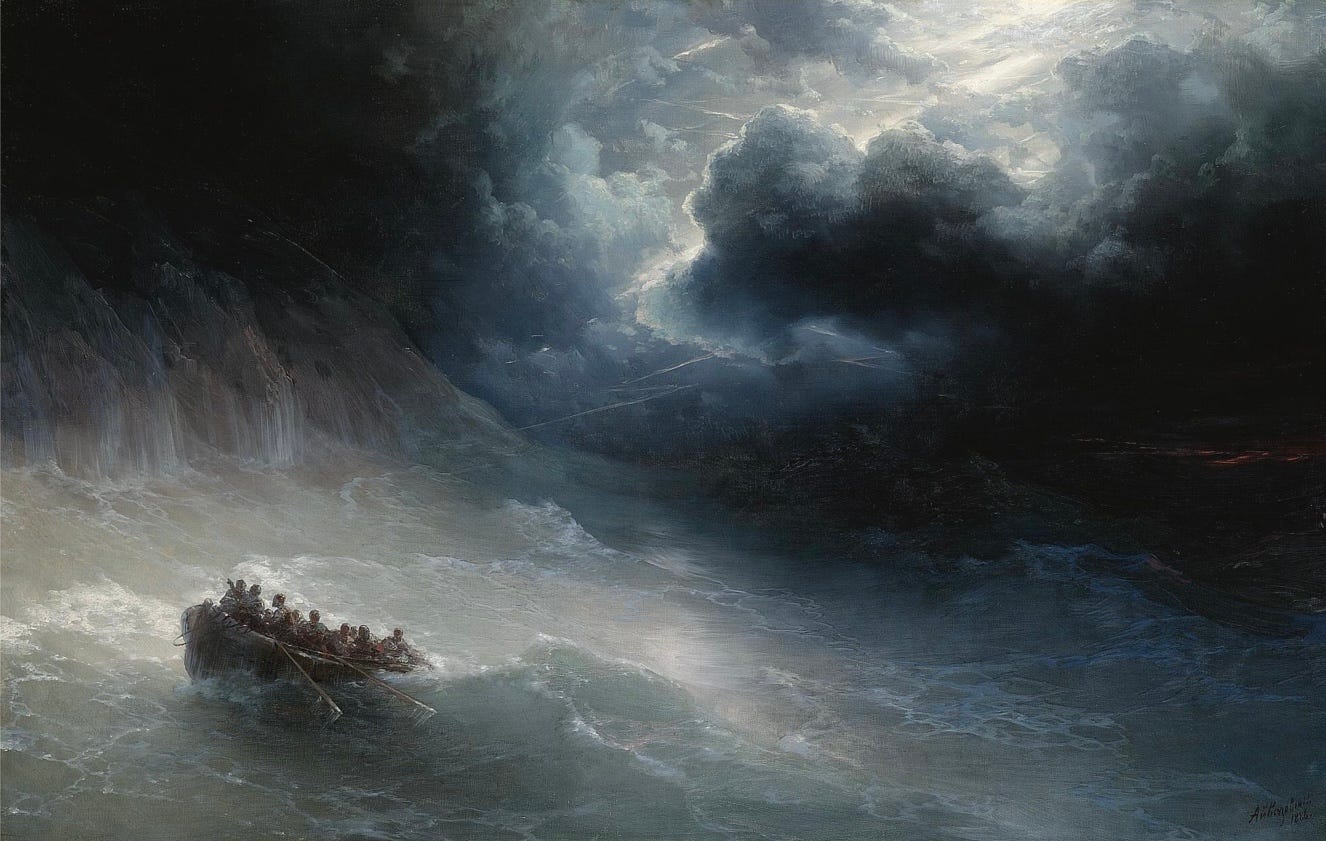The Flood
Holy Land: Edition VI
Welcome to Cosmographia. This post is part of our Holy Land series. For the full map of Cosmographia posts, see here.
Après moi, le déluge.
— King Louis XV
When one begins to read the myths, legends, and holy scriptures of cultures around the world, one starts to see a pattern. A pattern that seems nothing short of astounding.
Within stories coming from distant corners of the earth, there are recurring motifs — Edenic paradises, fratricidal brothers, the theft of fire, to name but a few. These motifs appear again and again the world over, belying the great distances across both time and space between the cultures that produced them. Perhaps the starkest example of this phenomenon is that of The Flood.
From the idyllic islands of the Pacific to the frozen taiga of Siberia, from the depths of the Amazon rainforest to the deserts of the Persian plateau, from Mesopotamia to Mesoamerica, we find stories of a Great Flood. Often, though not always, this deluge maps quite neatly onto the story of Noah and his ark. The gods create the first people, who misbehave or are wicked in some way. In an act of divine vengeance, the gods send a flood to cleanse the earth, from which only a select few are permitted to survive. Humanity thus begins again.
The startling similarity of these myths has prompted anthropologists, historians, and psychologists to ask: why?
One theory posits that there was indeed some long-forgotten flood (or floods) in the deep recesses of pre-history, and our myths are the remnants of a distant cultural memory of some cataclysmic event. People point to the melting ice of the Last Glacial Period (ending c. 11,700 years ago), or the controversial Black Sea deluge hypothesis, or a comet impact out at sea causing a gargantuan tsunami, as possible causes of this prehistoric flood.1
Another theory is that the flood myth must date back to a time before the various groups and peoples of the world began to disperse around the globe. Proponents of this idea suggest that the myths we record now are simply percolations of the same primordial story, dating back to an early population bottleneck, such as the Out of Africa event.2
Another idea was first put forward by the founder of analytical psychology, Carl Jung. Jung argued that the recurring motifs found in literature and myth are a reflection of certain universal, innate aspects of the human subconscious. He called these motifs ‘archetypes’ and believed they played a role in influencing human behaviour. Of the flood archetype, he wrote: “The choking, heart-constricting surge of instinct is projected outwards as a mounting flood to destroy everything that exists, so that a new and better world may rise from the ruins of the old.”3
Whatever the truth of these theories may be, they’re fascinating to think about.
What follows is a collection of just a few of the hundreds of flood myths from cultures all around the world. Where possible I’ve tried to use the words of written source material directly, though of course there is often a translator in between. The stories are accompanied by several centuries worth of mesmerising art depicting The Flood, because, well, why not.



